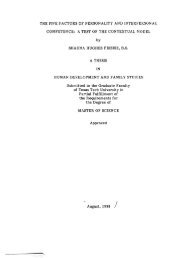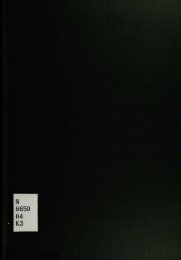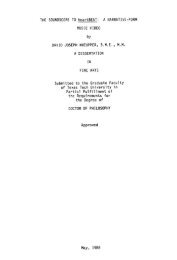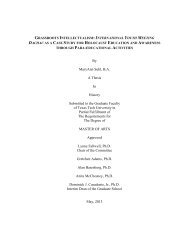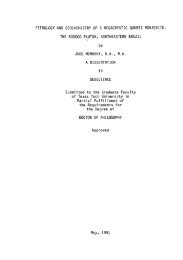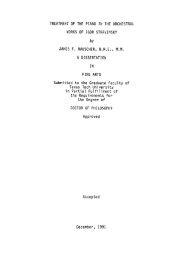Qualification of the Assembly Process of Flip-Chip BGA Packages ...
Qualification of the Assembly Process of Flip-Chip BGA Packages ...
Qualification of the Assembly Process of Flip-Chip BGA Packages ...
You also want an ePaper? Increase the reach of your titles
YUMPU automatically turns print PDFs into web optimized ePapers that Google loves.
Texas Tech University, Nivetha Shivan, May 2012<br />
There is a need to incorporate <strong>the</strong> additional step in <strong>the</strong> wafer fabrication technology<br />
called NSM which goes around <strong>the</strong> perimeter <strong>of</strong> a die with totally different geometry,<br />
extra metal stacks and a thicker Aluminium layer.<br />
There is a requirement <strong>of</strong> changing this packaging technology to <strong>Flip</strong> chip due to <strong>the</strong><br />
following reasons.<br />
<strong>Flip</strong> <strong>Chip</strong> allows <strong>the</strong> I/O signals to be distributed over <strong>the</strong> whole die area ra<strong>the</strong>r than<br />
being concentrated only to <strong>the</strong> periphery <strong>of</strong> <strong>the</strong> die. This feature provides <strong>the</strong> advantage<br />
<strong>of</strong> designing <strong>the</strong> die with power and ground distributions. As a result <strong>of</strong> which <strong>the</strong>re is<br />
improved signal integrity. This is particularly helpful when <strong>the</strong> device requires<br />
performing at high speed [8].<br />
As <strong>the</strong>re is more routable area owing to <strong>the</strong> I/O signals being distributed over <strong>the</strong> entire<br />
die, <strong>the</strong> package can be used for devices with higher pin counts as compared to <strong>the</strong> o<strong>the</strong>r<br />
types <strong>of</strong> package which has limitations on <strong>the</strong> number <strong>of</strong> pin counts.<br />
Since <strong>the</strong> assembly interconnect technology has transitioned from <strong>the</strong> traditional wire-<br />
bonding technique to <strong>Flip</strong>-chip, <strong>the</strong>re is quite a need to qualify <strong>the</strong> new package type. The<br />
goal <strong>of</strong> this project is to qualify <strong>the</strong> new package type for an existing product (pre-<br />
engineering qualification). Engineering qualification is when <strong>the</strong> new package type will<br />
be qualified for <strong>the</strong> new product.<br />
The various failure mechanisms that could result as a consequence <strong>of</strong> changing <strong>the</strong><br />
package type:<br />
� Die crack<br />
� Substrate pop corn crack<br />
� Electrical Continuity failures due to underfill delaminations or an open bump<br />
In this project, we use acoustic microscopy and cross-sectioning for examining <strong>the</strong>se<br />
failures in <strong>the</strong> <strong>Flip</strong> <strong>Chip</strong> devices. This project is a team effort which consists <strong>of</strong> product<br />
8




